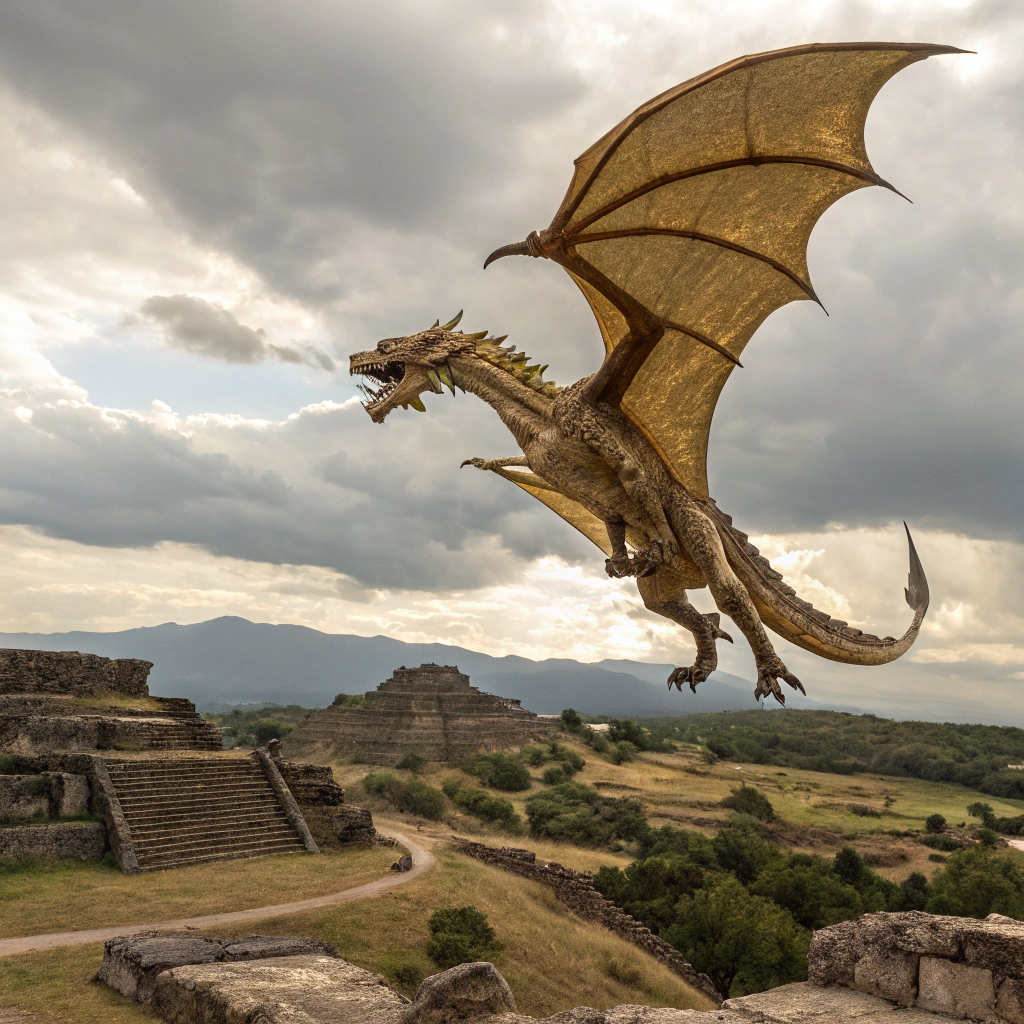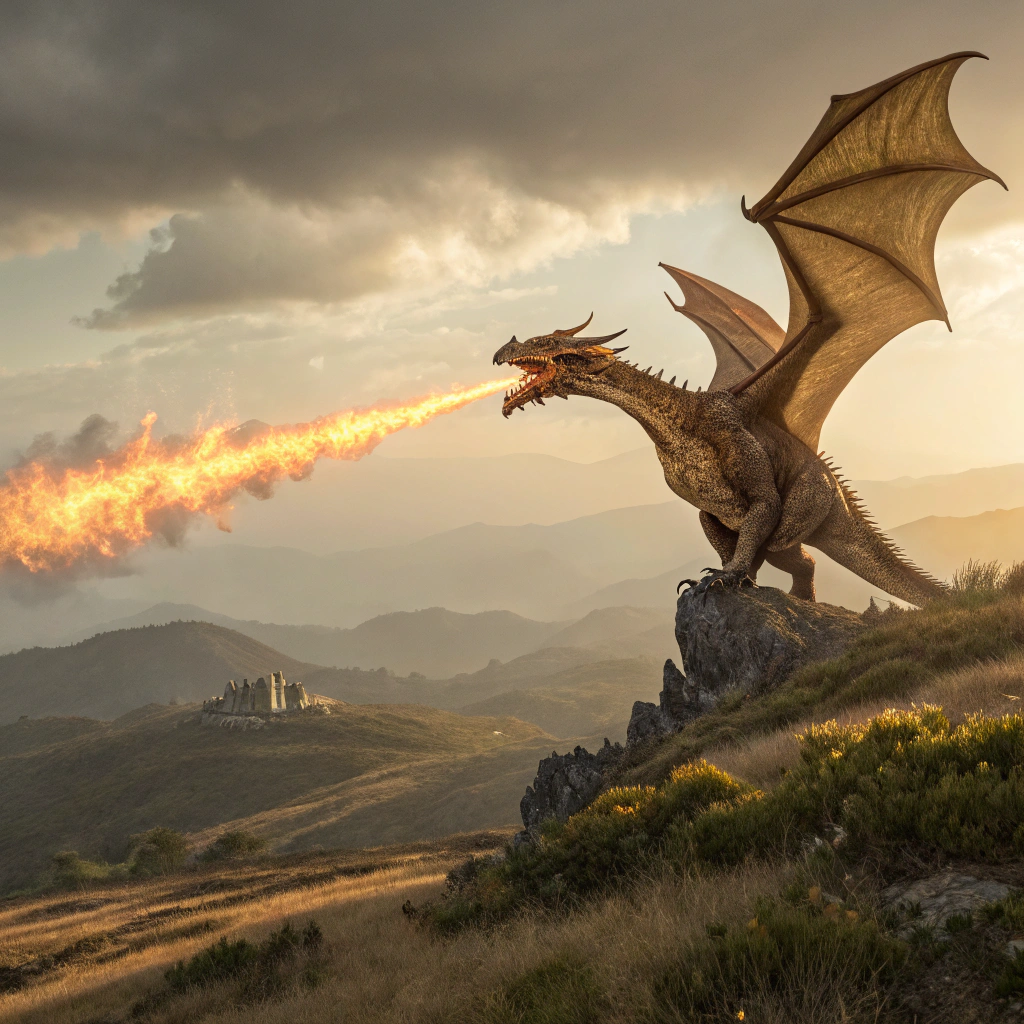
Gold Metallic Dragon Name Generator
Name: Aureus
Meaning Origin Description Golden Latin Reflects the dragon's metallic scales and noble natureName: Chrysos
Meaning Origin Description Gold Greek Emphasizes the dragon's magnificent golden appearanceName: Solaris
Meaning Origin Description Of the Sun Latin References both the color and radiant presenceName: Aurelian
Meaning Origin Description Golden One Latin Denotes royal heritage and golden hueName: Orion
Meaning Origin Description Rising One Greek Suggests celestial connections and grandeurGold Metallic Dragon Details
| Habitat | Near civilizations |
| Breath weapon | Cone of fire or weakening gas |
| Usual alignment | Lawful Good |
The Gold Metallic Dragon (Draconus nobilitas aureus) represents one of the largest and most intellectually advanced draconic species. These magnificent creatures typically reach lengths of 60-80 feet at full maturity, with wingspans extending up to 120 feet. Their scales possess a distinctive metallic luster, ranging from pale yellow to rich amber, with iridescent qualities that intensify with age.
Primary habitat preferences include temperate to warm mountainous regions, where they construct elaborate lairs incorporating multiple chambers and sophisticated defensive mechanisms. These dragons demonstrate remarkable architectural and engineering capabilities in their habitat modification.
Notable physiological features include:
- Exceptional lung capacity enabling sustained high-altitude flight
- Dual attack mechanisms: physical bite force and breath weapon
- Advanced healing capabilities and extreme longevity (4000+ years)
- Superior olfactory system capable of detecting minute traces of various substances
- Highly developed frontal cortex indicating advanced reasoning capabilities
Behavioral characteristics:
- Highly territorial but diplomatic in approach
- Strong protective instincts toward weaker creatures
- Complex social hierarchies when interacting with other metallic dragons
- Sophisticated problem-solving abilities
- Strong inclination toward law and order
Diet consists primarily of large herbivores, though they require minimal sustenance due to efficient metabolic processes. They supplement their diet with precious metals, particularly gold, which contributes to their scales' unique properties.
Their breath weapon manifests in two forms:
- A cone of fire reaching temperatures of approximately 3000°F
- A gas cloud inducing temporary paralysis in affected creatures
These dragons exhibit strong lawful good behavioral patterns, demonstrating consistent ethical decision-making and a profound sense of responsibility toward maintaining ecological and societal balance. They frequently establish themselves as guardians of civilization, particularly focusing on the protection of human and humanoid settlements that align with their moral framework.
Intelligence testing indicates cognitive capabilities far exceeding most other draconic species, with problem-solving abilities comparable to or exceeding human genius-level intellect. They possess exceptional memory retention and linguistic capabilities, typically mastering multiple languages including Common, Draconic, and several regional dialects.
Social structure involves solitary territorial behavior, though they maintain complex networks of information exchange with other metallic dragons and trusted intelligent species. They demonstrate particular interest in human civilizations, often serving as distant protectors or occasional advisors to worthy leaders.
Research indicates these dragons possess a natural affinity for magic, particularly in the schools of divination and abjuration. Their magical capabilities appear to increase with age, correlating with their accumulation of knowledge and experience.
Reproductive cycles occur approximately once per century, with clutch sizes ranging from 2-4 eggs. Parental investment is significant, with extensive education of offspring continuing for several decades after hatching.
Alignment analysis consistently demonstrates lawful good tendencies, with statistical deviation being extremely rare. This behavioral pattern appears to be genetically ingrained rather than learned, suggesting evolutionary adaptation toward cooperative and protective social structures.
Their role in ecosystem maintenance extends beyond mere apex predator status, as they actively work to maintain balance in their territories through diplomatic intervention and calculated use of their considerable powers.

